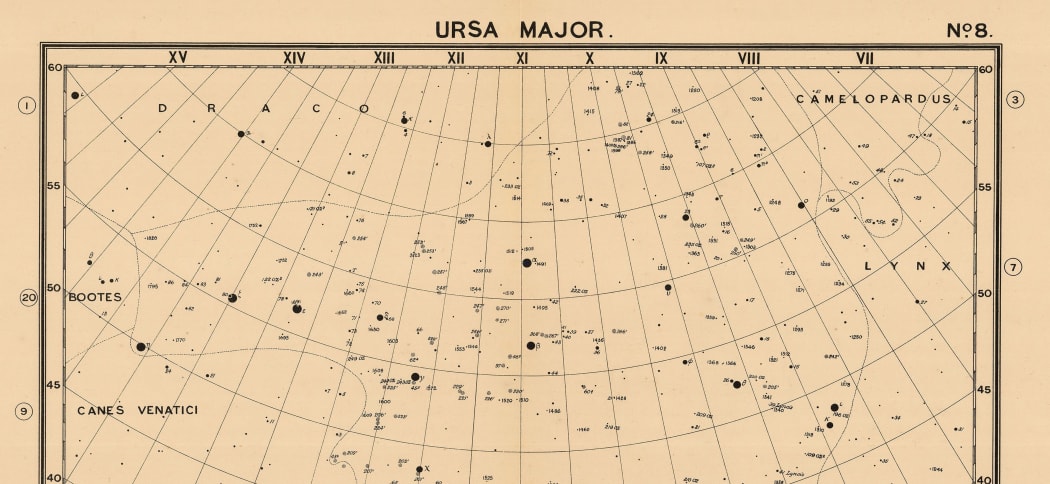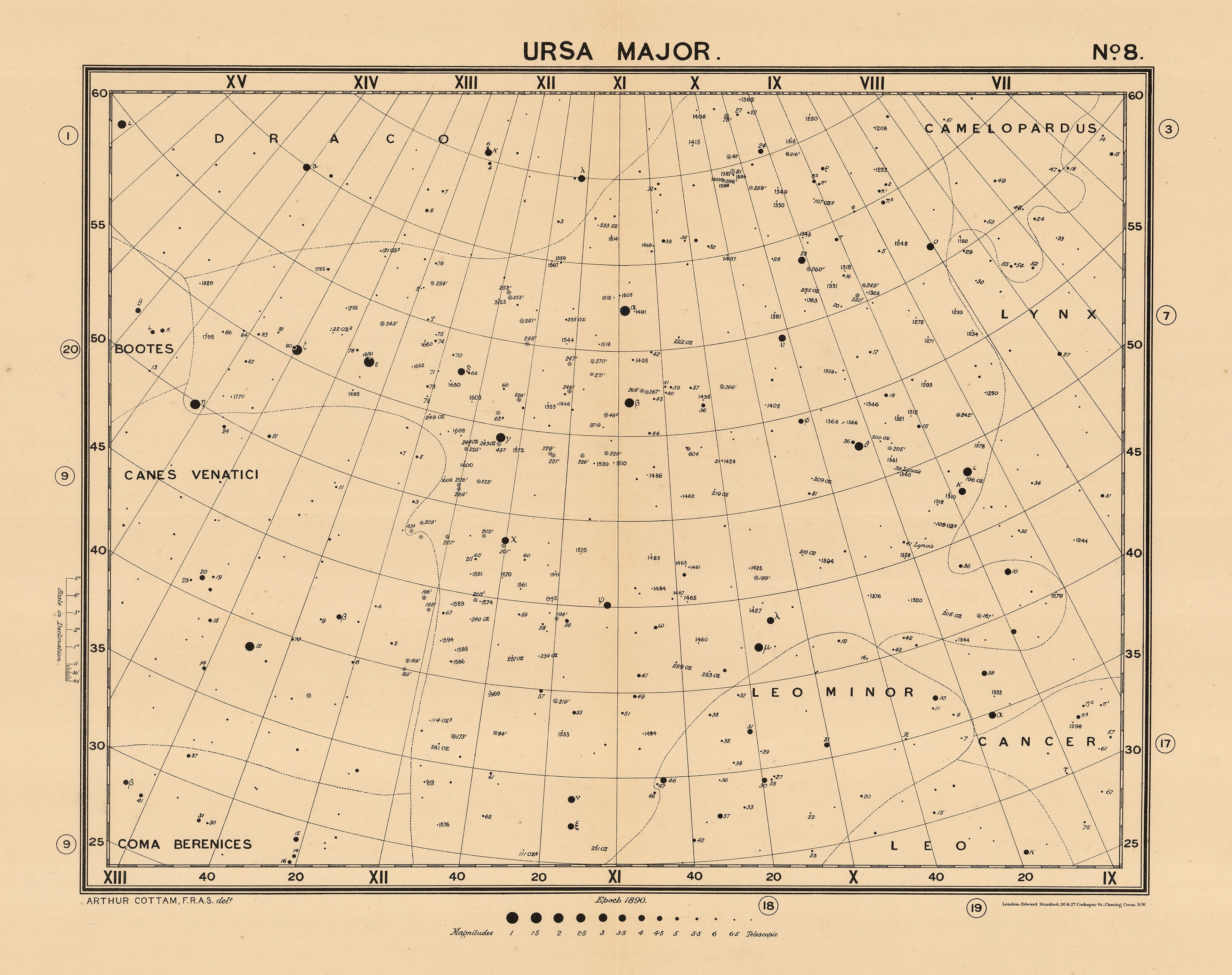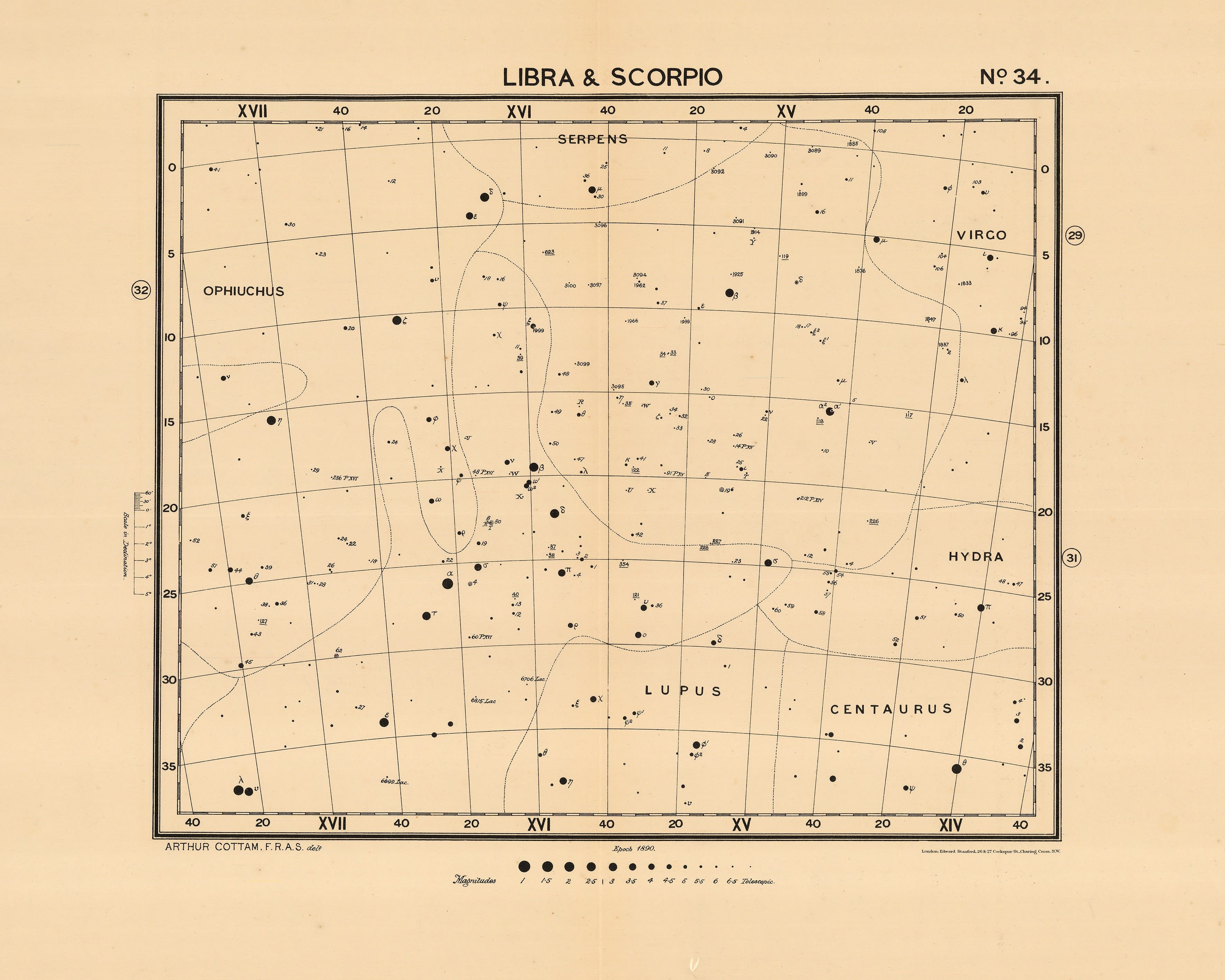
As International Dark Sky Week, Global Astronomy Month, and the UN International Year of Light coincide, we figured what better opportunity to put together Arthur Cottam’s Star Maps.
This stark and yet beautiful collection provides a wonderful visual aid, improving our understanding of the night sky.
Arthur Cottam R. A. S. (1836 – 1911) was an enthusiastic scientist and astronomer, a member of the Royal Astronomical Society and a founding member of the British Astronomical Association. In 1889 he published these maps, either bound or presented as a portfolio.
The atlas was entitled “Charts of the Constellations” and comprised of 36 large charts for the amateur and expert astronomer alike. For publication Cottam teamed up with the successful London map maker, Edward Stanford.
The First Edition was limited to a printing of 200, and the majority were immediately subscribed for. Due to popular demand a condensed Second Edition followed in 1891, from which these maps are sourced. The atlas was printed on drawing paper in a hope to encourage the owner to make additions of their own observations.
Cottam’s published lecture on constellation charts can be
read here.

Here the charts are described in Nature, “.. a series of thirty-six most excellent charts of the constellations from the North Pole to between 35° and 40° of south declination, and showing stars in half magnitudes down to 6 1/2 by disks of various sizes. Although the primary object in constructing these charts was to make them companions to Webb’s ‘Celestial Objects for Common Telescopes’ and Smyth’s ‘Cycle of Celestial Objects’, their scope has been considerably enlarged, and a number of double, multiple, and variable stars have been laid down which are not included in either of the above-mentioned works. The Earl of Crawford’s (Dun Echt) summary of F.G.W. Struve’s Dorpat Catalogue included 2248 double and multiple stars, and of them, 2130 are shown upon these charts. In addition to this, 275 of the double stars discovered by Mr. S.W. Burnham have been mapped, this being the whole of those included in his first four catalogues, and a selection from his other catalogues. The maps have been drawn to a scale of one-third of an inch to a degree, which is a much larger scale than any hitherto published, and as each map includes but a small portion of the heavens, there is practically no distortion, whilst the epoch being 1890, the positions will hold good, without any serious errors, for fifteen or twenty years beyond that date. The projection is conical, or, in those charts which extend any distance both north and south of the equator, cylindrical. Hence it will be easy to lay down any additional objects that may be required. There is no doubt that these charts will be eminently useful, one of their great advantages being that they will enable possessors of telescopes mounted on altazimuth stands or without circles to find with ease a large number of interesting objects, and thus will help to extend the knowledge of the heavenly bodies and to popularize the most fascinating of sciences.”.{1}
To find out more about our collection of these striking star charts, please email us:
maps@themaphouse.com
{1} – Microscopist.net, A Cottam, published Feb 2015 by Brian Stevenson.
About the author
The Map House








